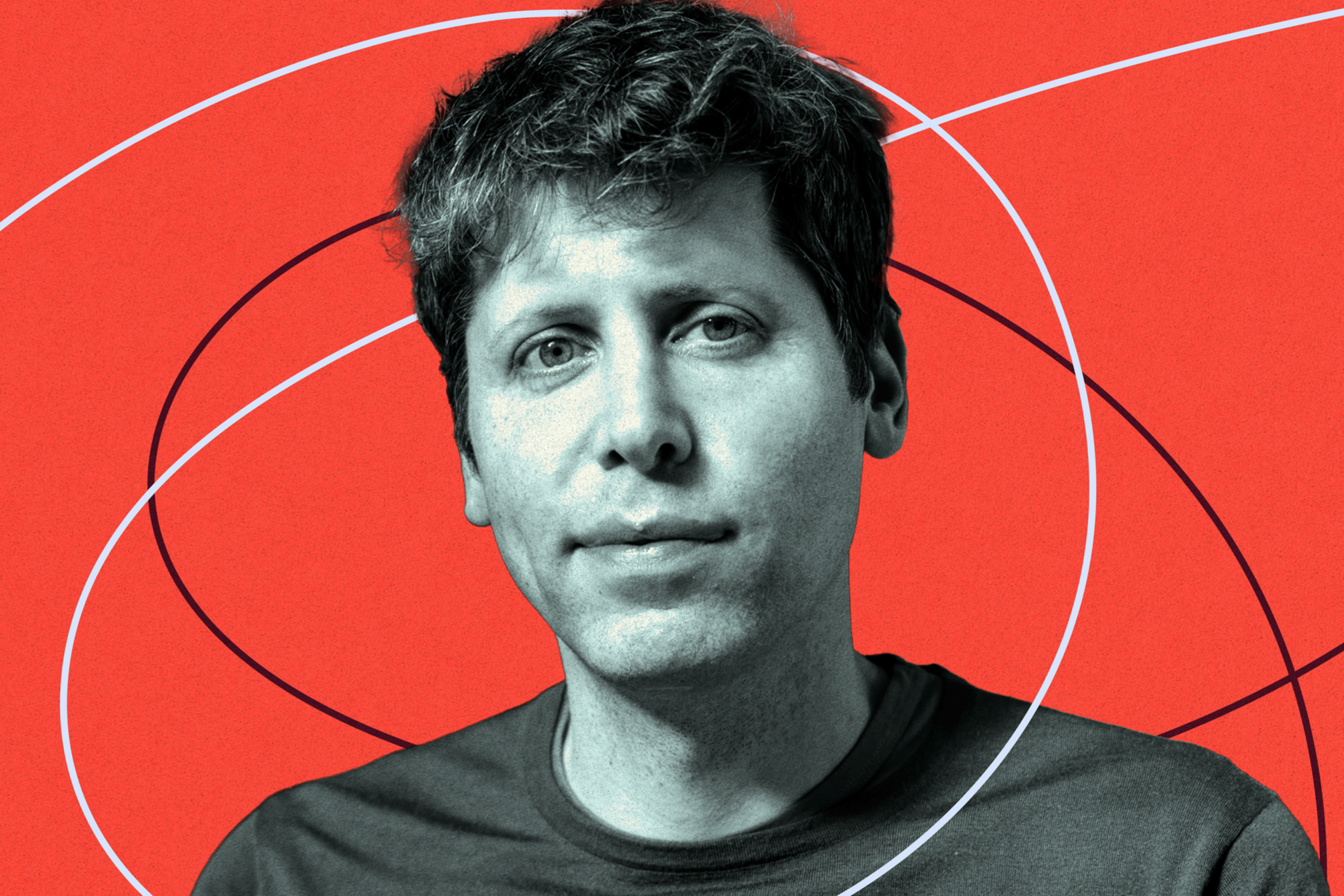Artificial intelligence is the latest technology experiencing “peak hype cycle” (opens in new tab) in San Francisco startups. But hasn’t it been around for decades?
Yes, but AI technology took a significant leap in the last year, and investors are now pouring billions into a whole slew of startups, Big Tech programs and new applications. But if you’re like us, you might find it tough to keep up with the dizzying array of names, companies and timelines that comprise what boosters are now calling an artificial intelligence revolution.
The Standard presents the following essential overview of the San Francisco AI scene and where it stands today.
A Timeline of the AI Revolution
Murmurings about artificial intelligence date far back into antiquity, and interest in AI has ebbed and flowed over the last few decades. But machine-learning research has been constant during this time, quietly evolving and growing in the background of a tech industry that was once fixated on social media and cloud computing.
Indeed, tech companies across the Bay have been investing in artificial intelligence and machine-learning products for years now. Since Google and Microsoft, in particular, have built out entire teams (opens in new tab) dedicated to applying AI to their existing products, often paying salaries more likely to be seen for professional athletics.
But artificial intelligence became all the rage again in early 2022, when advancements in machine learning transformed its abilities to include generation. Before last year, AI use cases were relegated to analysis and rote cognitive labor alone (opens in new tab)—now, machine-learning models have the ability to produce, create and generate new things.

Now known as “generative technology,” gen AI is the latest innovation driving the machine-learning hype in the SF Bay Area. Though many of the industry’s biggest names got their start well before 2022, the AI sector’s recent excitement has increasingly concentrated both investment dollars and intellectual capital centered in the Bay Area.
The cause? Key developments in a few “foundation models (opens in new tab)” and a widespread availability of computing power have made it increasingly easier for coders to develop numerous newer generative tools and applications—and thus, startups—based on those original AI models. This wave of AI creation has led some founders to believe that we are entering a new industrial age (opens in new tab) in tech.
Venture Capitalists Are Swarming
Excitement about new technological advancements in AI has translated to yet another gold rush for tech investors and startups alike. Even amid an overall lackluster VC investment environment last year, generative AI companies proved to be a major bright spot—particularly in the Bay Area.
AI startups based in the San Francisco Bay Area account for over half of all the funds raised by roughly 500 total generative tech platforms, despite only comprising a fifth of those companies. These Bay Area AI companies have raised $6.75 billion in funds, spread across 111 startups.
Five things we learned from our bare-all interview with Sam Altman

“The reports of the death of San Francisco are greatly exaggerated,” said James Currier, investor and partner at NFX, a firm that specializes in seed-stage startups. “AI is here because the tech is here. All of us have moved here and have been brought here by Big Tech companies, and others spinning out and doing startups. And as the cycle continues, the network effects of the tech industry in San Francisco remain.”
Early Lawsuits and Controversies Around AI
Though investors are flocking toward generative tech, the newness of AI products and the companies surrounding them means few regulatory guardrails exist—and some early players are making enemies. The lawyers have descended, filing a docket-full of lawsuits and critiques against AI-based companies and products, including the following:
- Artists claim that AI image generators may actually copy artwork or art styles from existing creatives.
- The SF Ballet came under fire for using AI-generated images in its promotional materials for the Nutcracker.
- Bay Area-based Joseph Saveri Law Firm filed a class-action lawsuit, which alleges that the companies violated the rights of creators who contributed to GitHub under open-source licenses. The firm followed up that complaint with a similar lawsuit (opens in new tab) challenging the Stable Diffusion image generation tool.
- A startup’s proposition to use AI chatbot “robot lawyers” to defend clients in court has received threats of prosecution from a state bar association.
- Bay Area teachers are concerned that students will start using AI chatbots and generators to plagiarize or cheat on homework assignments.
- There’s been growing attention on the so-called AI underclass (opens in new tab), the collection of low-paid laborers who are used to train and validate generative AI models.

The 3 Startups Driving San Francisco’s AI Scene
These are the game-changers in AI, many of which have been around for years—and they’re all based in SF. Their products are often the foundation models for the text and image generators that have recently gone viral.
OpenAI
The San Francisco-based (albeit secretive) company behind the development of the ChatGPT platform (opens in new tab) is the firm that helped many in the general public grasp the potential of generative AI. OpenAI—which is split between a nonprofit arm and a for-profit corporation—previously released its image model DALL-E, which allowed users to generate digital images using text prompts. The company has also developed OpenAI Codex (opens in new tab), which translates natural language into computer code. That model underpins GitHub Copilot, a service that helps programmers through auto-complete style suggestions.
OpenAI was founded in 2015 by a number of tech luminaries including Elon Musk, Peter Thiel and LinkedIn co-founder Reid Hoffman, who helped seed the company with $1 billion in pledged investment. The company is rapidly ramping up its commercial activities with the help of a new multibillion-dollar partnership with Microsoft (opens in new tab) and ambitions to grow its revenue to more than $1 billion next year (opens in new tab).
Scale AI
Many of the foundation models that underpin generative AI technology are fed by vast arrays of data that need to be validated and trained for specific applications. Enter Scale AI, a San Francisco-based company co-founded in 2016 by CEO Alexandr Wang, who now ranks as one of the youngest self-made billionaires in history.
Scale AI’s speciality is handling the entire data training life-cycling—from extracting specific pieces of valuable information from data sets to testing the performance of models to generating its own set of computer-generated data. It has raised more than $600 million from investors including Tiger Global, Coatue Management and Founders Fund in pursuit of that goal. In a nod to the growing usage of AI tools across industries, Scale AI was awarded a $250 million contract (opens in new tab) by the U.S. Department of Defense last year.
Anthropic
The pitch from Anthropic, a San Francisco-based company founded by a group that included a number of former OpenAI researchers—including its CEO Dario Amodei—is making AI safer and more human-friendly. Ergo its name, a term that means involving the existence of human life.
Its version of a generative chatbot like ChatGPT is known as Claude and was developed through a technique Anthropic calls “Constitutional AI (opens in new tab).” Essentially, the technology is grounded to a series of defined principles that allows it to self-identify harmless outputs. Recently, the New York Times reported (opens in new tab) that Anthropic is closing in on another $300 million in funding, which would boost its investment past the $1 billion mark and value the 2-year-old firm as high as $5 billion.

A Glossary of AI Terms to Know
There’s too many acronyms and new tech terms to keep track of these days—so we’ve compiled all the ones you need to know to successfully navigate this AI wave.
Artificial intelligence (AI): Technology that allows computers to simulate “intelligent” human processes such as perceiving, synthesizing or inferring information.
Machine learning: A type of artificial intelligence that involves training models or algorithms to improve themselves toward a specific purpose using data.
Generative AI (Gen AI): An algorithm or computer model that can be used to produce new text, image, speech, music, code or video content.
Foundation model: AI models that are trained on a broad set of data, and which can be adapted to numerous situations.
Large language models (LLM): An example of a foundation model type, which is trained on huge quantities of text. An example is GPT-3, which serves as a base system for chatbots and other language processing tools.
Artificial general intelligence (AGI): A level of machine intelligence that matches human intelligence across all aspects.
Synthetic data: Information that is artificially generated and can be used to train models at lower cost and with less effort than collecting real world data.
Neural network: An AI technology that uses the processes of the human brain as a model to train computers to process information. In brief, computation happens through nodes broadly similar to neurons in the brain, which weighs input data and decides whether to activate a specific function. Deep learning refers to the use of neural networks with multiple layers.
Generative adversarial networks (GANs): A machine-learning technique that pits two neural networks against each other, with one trying to fool the other into thinking the content it is generating is real. This technique is used to generate synthetic images or other types of content that can pass as real data.
Natural language processing (NLP): A branch of AI that is focused on allowing computers to understand speech or written text in the same way a human can.
